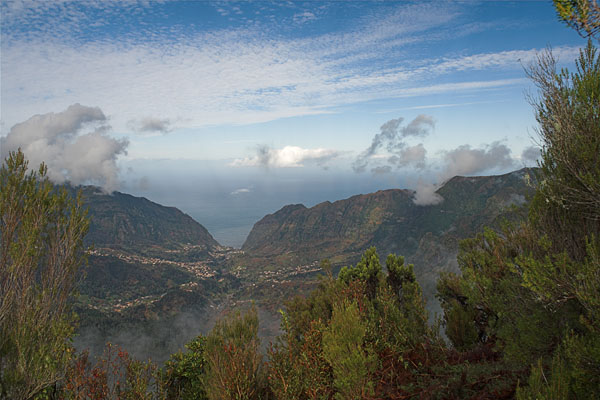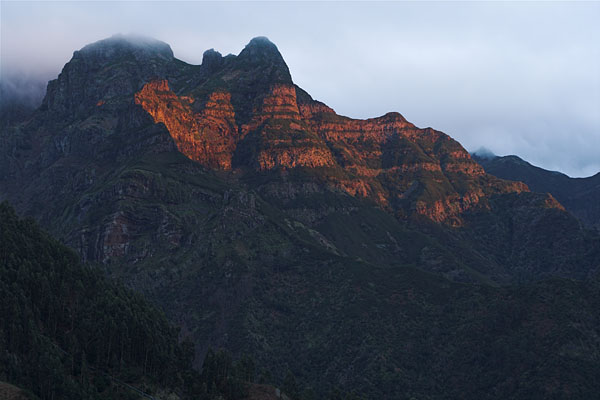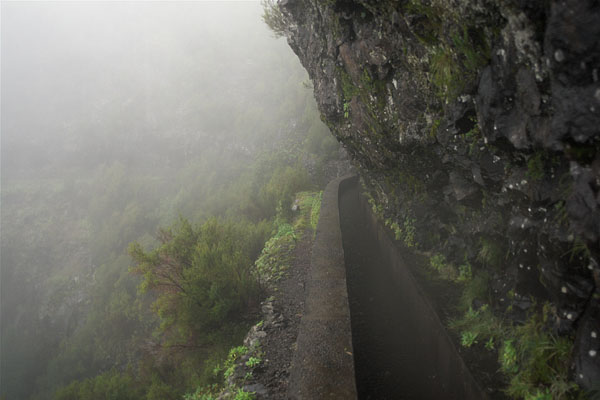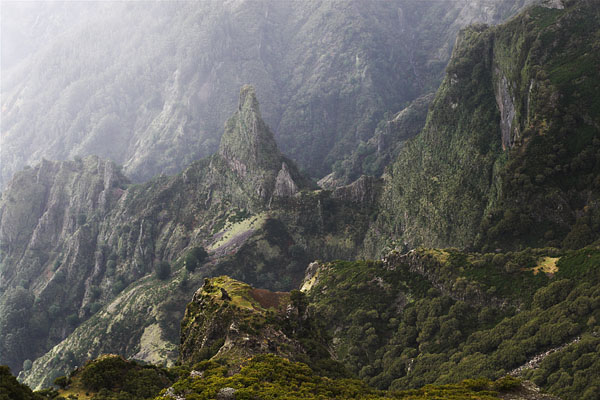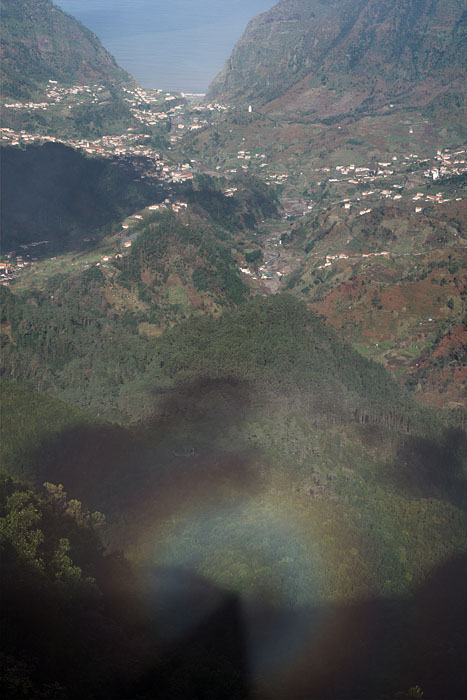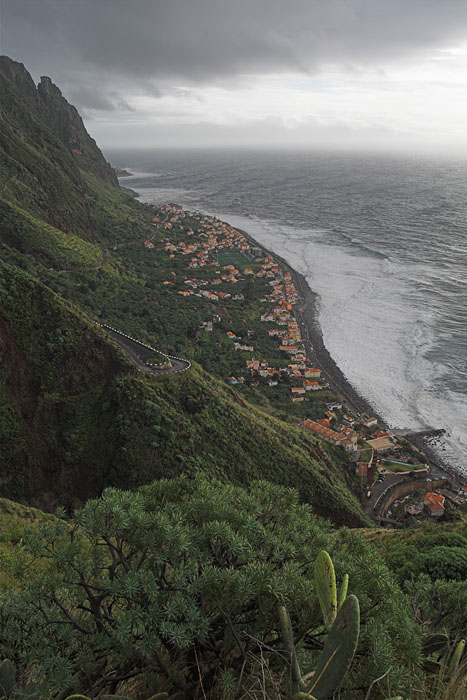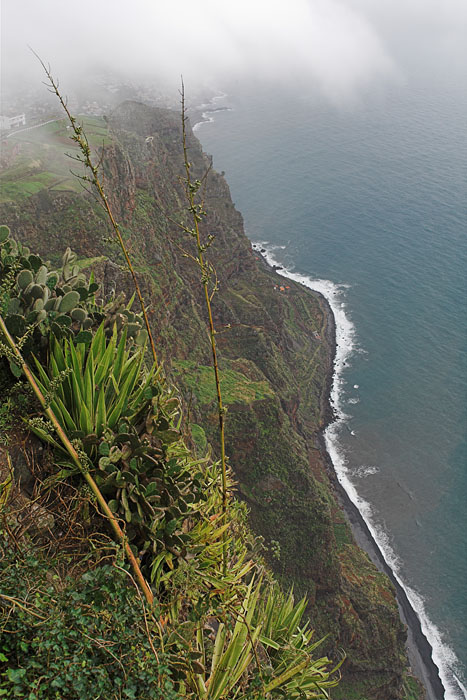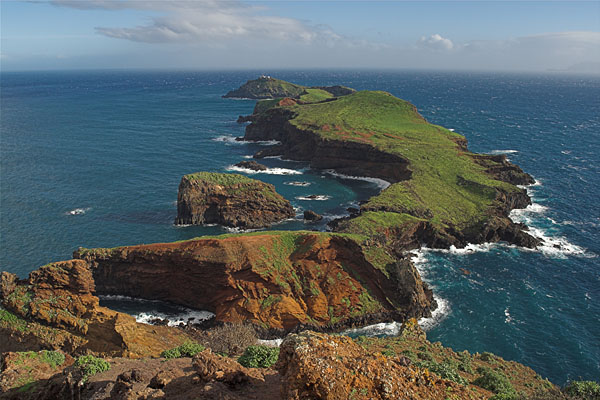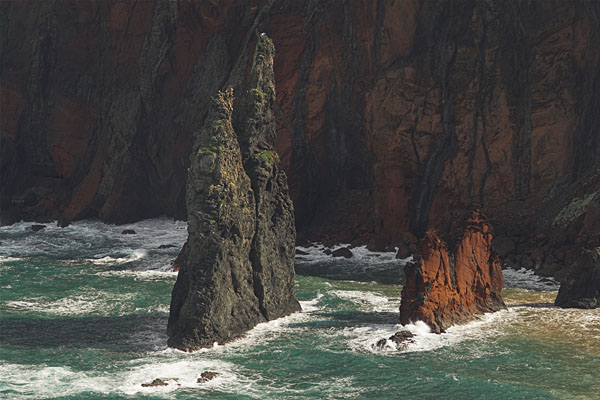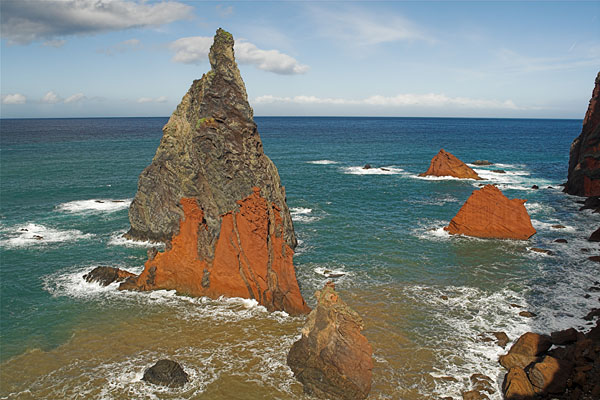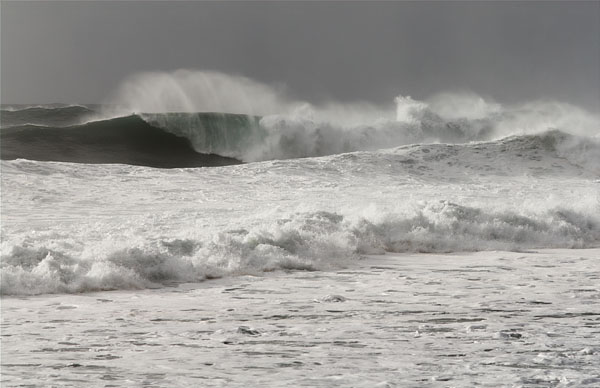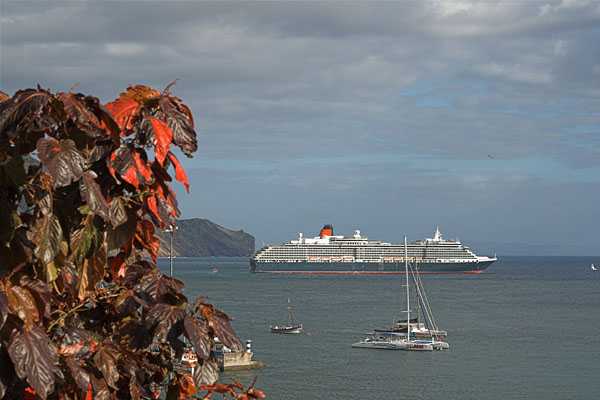EndThe eastern end of Madeira is a stretched peninsula, a place that greets the visitor first during the approach to Funchal airport, and a place that offers a popular trail over the barren soil of Ponta de Sao Lourenco. In our case, it was once more a refuge from the unforgiving weather up in the mountains. |
CliffsExposure to wind, sea, and sun, this is the basis for a climate of its own. Harder magmatic rocks withstood erosion and survived as tall rocks surrounded by the sea, some of them have even been rewarded a name, like this one, called Ilheu do Guincho. |
